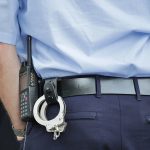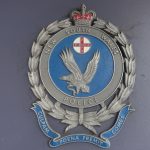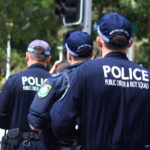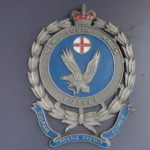Move On Orders in New South Wales: Quotas, Bias and Intoxication
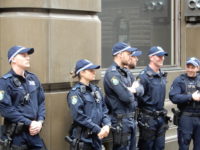
As of 11 am on 9 May, NSW police officers had issued 1,198 COVID-19-related penalty infringement notices since 26 March. But, as Australian governments are beginning to gradually lift lockdown restrictions, officers are easing up on the issuing of the pandemic-specific fines.
For the most part, the laws have operated in a similar manner to move on orders. So, if an officer finds a person sitting on a park bench and they can’t provide a “reasonable excuse” as to why they’re there, then they can be told to go home.
And if the individual has been warned before, they can also cop a $1,000 fine.
Just like move on orders, concerns have been raised around whether these fines are being disproportionately issued to people and populations more likely to be subjected to police scrutiny, such as First Nations people, youths, the homeless, and less affluent sectors of society.
Move on powers have long been part of the NSW Police Force’s repertoire. These directions permit officers to order an individual to leave a public place on the grounds that their behaviour is causing some sort of disruption, or their mere presence is producing fear in others.
But, there’s one major difference in the way that NSW police officers have been enforcing COVID-19 laws, compared to move on directions. And that is that these days, local area commands are being given with quotas that stipulate how many move on orders should be issued over a year.
Time to move on
Along with most of the powers NSW police has available to it, the laws pertaining to move on directions are found in the Law Enforcement (Powers and Responsibilities) Act 2002 (NSW), which is otherwise known as the LEPRA.
Section 197 of the LEPRA contains the main move on powers, with a number of scenarios where an officer can tell an individual to leave a public place.
These include when that person is obstructing another person, people or traffic, if they’re harassing or intimidating someone else, if they’re likely causing a “person of reasonable firmness” to be fearful, or if they’re in a public place with the aim of selling or buying illicit substances.
It also stipulates that a direction should be “reasonable” under the circumstances, that the person only has to be close to the public place at the time of the questionable conduct, and in the case of behaviour causing fear, the person of reasonable firmness doesn’t have to be present.
Section 199 of the LEPRA outlines that failing to comply with a move on direction makes an individual liable to a fine of $220. It also stipulates that the person isn’t guilty of the offence, unless it was established that the person persisted with their behaviour after the direction was given.
Further stipulations
A public place is defined under section 3 of the LEPRA, as a place – which can be covered by water – or a premises that’s open for public use. This is regardless of whether the place or premises has an entry fee, if it is always open to the public or it’s only open to a limited number of people.
A road or “road related area” is a public place, but a school isn’t.
Section 200 of the LEPRA provides limits to the application of move on laws. Police cannot issue such an order in relation to industrial disputes, genuine protests, processions or organised assemblies, unless an officer perceives a serious risk to safety or traffic is being obstructed.
And an officer can give a move on direction to a group of people. Section 198A of the LEPRA states that an officer is not expected to give a direction to each member of a group. Although, this does not mean that it can be assumed every member of a group received a direction or warning.
Moving on the intoxicated
Section 198 of the LEPRA allows an officer to move on a person from a public place if they’re intoxicated – by alcohol or any other drug – and their behaviour is disorderly or it’s causing the potential for injury, damage to property or it’s risking public safety.
Under these circumstances, the move on direction must be reasonable, the subject of the direction is being moved on from a public place for the period of six hours, and any person being placed at risk by the subject doesn’t have to be in the public place, but merely situated close by.
An officer must give the subject of the direction a warning prior to being moved on. This must inform them that it’s illegal to be intoxicated and disorderly in that public place or any other for the next six hour period following the issuing the order.
Failure to comply with an intoxicated move on order is an offence that falls under section 9 of the Summary Offences Act 1988 (NSW). The crime carries a penalty of a $1,650 fine.
Policing by numbers
NSW Greens MLC David Shoebridge revealed in mid-February that the NSW Police Force is issuing yearly targets to each local area command within the state, relating to move on orders, as well as conducting other police functions, such as searches.
Obtained via freedom of information laws, the quotas show that over the year 2019-20, Sydney City Police Area Command is expected to issue 8,795 move on directions, officers in Blacktown should hand out 3,396, while in the Blue Mountains, officers only need 299 orders to make their quota.
“The very idea of quotas for the use of discretionary powers, like move on orders, is anathema to the concept of policing to the law and the circumstances on the ground,” Mr Shoebridge told Sydney Criminal Lawyers back in February.
“When it comes to quotas for those discretionary powers, it’s effectively incorporating a for-profit corporate model into what is meant to be a public service designed to comply with the law and respect people’s rights,” the Greens justice spokesperson added.


